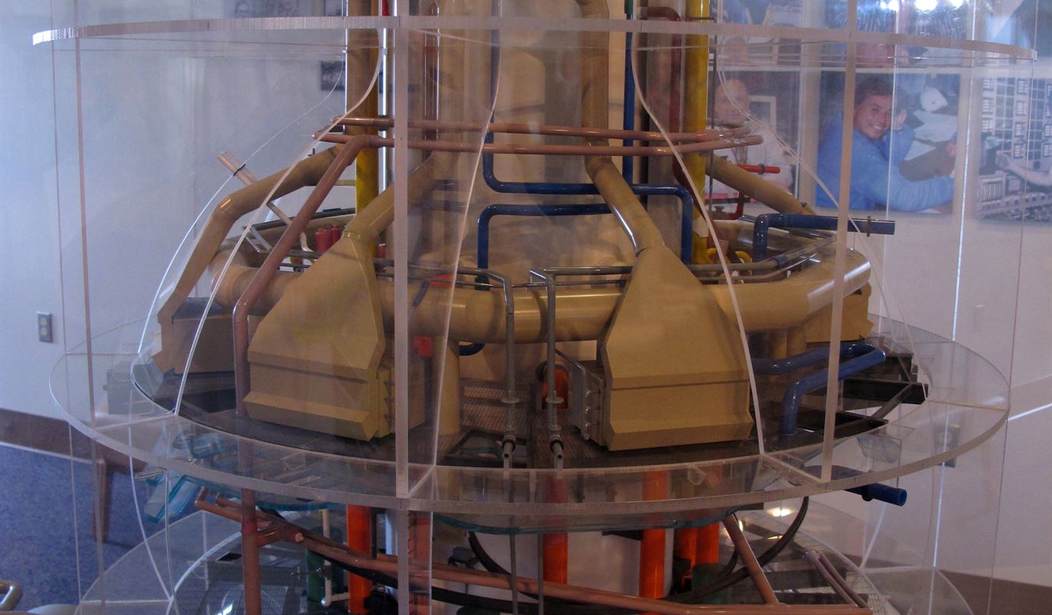It has long since become obvious that the Biden energy crisis is not unique to the United States. Many nations, particularly in Europe, are running up against similar threats to the sustainability of their energy grids. The reasons vary, with some being self-inflicted wounds in the name of climate extremism while others involve external factors such as the impacts of Russia’s war in Ukraine and the Kremlin holding oil and natural gas supplies hostage. No matter the cause, solutions are required and one that is getting a fresh look in all impacted areas is nuclear energy. Long used as a boogeyman by activists, the latest generation of small module reactors (SMRs) is showing a great deal of promise and could significantly reduce reliance on currently constrained supplies of fossil fuels and unreliable renewable energy sources. But there are still activists and some of their stenographers in the mainstream media who are wringing their hands and cautioning against such “risky” forms of energy production. One example is found in this analysis from the Associated Press.
A global search for alternative sources to Russian energy during the war in Ukraine has refocused attention on smaller, easier-to-build nuclear power stations, which proponents say could provide a cheaper, more efficient alternative to older model mega-plants.
U.K.-based Rolls-Royce SMR says its small modular reactors, or SMRs, are much cheaper and quicker to get running than standard plants, delivering the kind of energy security that many nations are seeking. France already relies on nuclear power for a majority of its electricity, and Germany kept the option of reactivating two nuclear plants it will shut down at the end of the year as Russia cuts natural gas supplies.
While Rolls-Royce SMR and its competitors have signed deals with countries from Britain to Poland to start building the stations, they are many years away from operating and cannot solve the energy crisis now hitting Europe.
Rolls-Royce SMR has already developed a solid customer base for their SMR reactors and they can point to France as an example for others to follow. While France is still experiencing shortages in certain areas, they are in much better shape than countries like Germany. This is almost entirely because of the significant investments France made in nuclear energy over the past decade or more.
Traditional nuclear reactor plants took up to a decade to come online and cost from seven to nine billion dollars. Those factors scared off many potential investors who were unsure if they would ever see a return on their investment. Today’s Rolls-Royce SMRs can be ready to go in as little as five years at a cost of 2.5 to 3 billion dollars.This makes them attractive options in the current energy landscape. But the linked AP report dredges up the complaints of environmentalists over issues relating to the disposal of nuclear waste from spent fuel rods.
The introduction of “unproven” nuclear power technology in the form of SMRs doesn’t sit well with environmentalists, who argue that proliferation of small reactors will exacerbate the problem of how to dispose of highly radioactive nuclear waste…
[Rolls-Royce SMR spokesman Dan] Gould said one Rolls-Royce SMR would generate nuclear waste the size of a “tennis court piled 1-meter high” throughout the plant’s 60-year lifetime. He said initially, waste would be stored on site at the U.K. plants and would eventually be transferred to a long-term disposal site selected by the British government.
Storage of nuclear waste from spent fuel rods has always been an issue and it remains a concern today. But the newest SMR designs are far more efficient at using their nuclear fuel, producing far less waste than the older, larger plants. Also, emerging technologies allow for highly efficient “recycling” of the spent fuel to create new fuel rods. France is already recycling 90% of its fuel rods and we could be doing the same soon.
No energy production model is perfect, but there are limited number of options that can be scaled up to meet the needs of the entire planet. People are always waiting for “the next big thing” to come along. That next big thing may be fusion reactors, but we’ve been waiting for decades and it’s still not really close to being ready. Some shocking new discoveries in the theory of how to contain plasma fields may bring that reality closer, but’s still mostly hypothetical and we need energy yesterday.
We can have any of these SMR plants up and running in as little as five years and they have lifespans measured in many decades. That won’t solve the immediate problems we’re facing today, but there is one thing we can say with certainty. If we do nothing about this, things will not be any better in five years. They will arguably be worse if we can’t bring our fossil fuel production levels back to where they were three years ago. But with enough stopgap measures to get us over the hump, in the next five to eight years, we could have enough nuclear power being generated in America, Europe and beyond to buy us another couple of centuries worth of energy. And who knows? By then we might actually have those fusion reactors coming online.








Join the conversation as a VIP Member